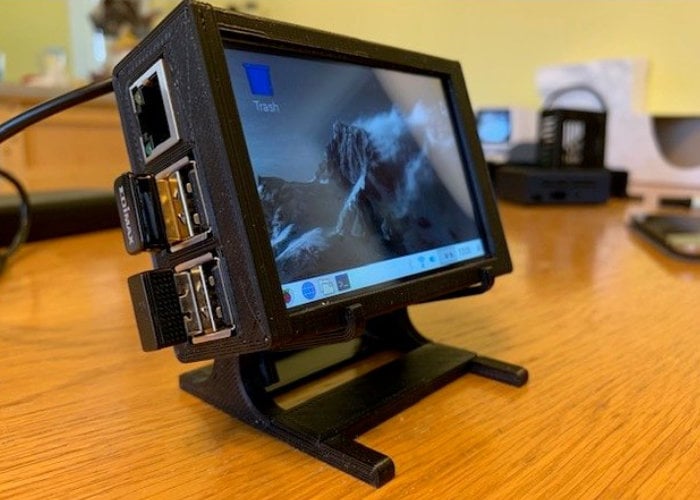Raspberry Pi Resource Monitor: The Ultimate Guide For Optimal Performance
Monitoring resources on a Raspberry Pi is essential for maintaining its performance and ensuring smooth operation. As one of the most versatile single-board computers available today, Raspberry Pi serves as an excellent platform for a variety of projects, from home automation to media centers. However, without proper resource management, even the best projects can falter due to performance issues. This guide will provide you with comprehensive insights into Raspberry Pi resource monitoring, helping you optimize your device for maximum efficiency.
Whether you're a beginner or an experienced user, understanding how to monitor and manage resources on your Raspberry Pi can significantly enhance your experience. This article will delve into the tools, techniques, and best practices for monitoring CPU usage, memory allocation, disk space, and network activity, ensuring that your Raspberry Pi runs optimally.
By the end of this guide, you'll have a clear understanding of why resource monitoring is crucial and how to implement it effectively on your Raspberry Pi. Let's dive in!
Read also:Discover The Enchanting City Of Walnut Creek A Haven For Nature And Culture
Table of Contents
- Introduction to Raspberry Pi Resource Monitoring
- Why Monitor Raspberry Pi Resources?
- Built-in Tools for Resource Monitoring
- Third-Party Tools for Resource Monitoring
- Monitoring CPU Usage
- Managing Memory Resources
- Monitoring Disk Space
- Monitoring Network Activity
- Tips for Optimizing Raspberry Pi Performance
- Conclusion
Introduction to Raspberry Pi Resource Monitoring
Resource monitoring plays a pivotal role in ensuring the efficiency and reliability of any computing device, including the Raspberry Pi. The Raspberry Pi, known for its affordability and versatility, requires careful management of resources to handle various tasks effectively. By monitoring CPU usage, memory allocation, disk space, and network activity, you can prevent bottlenecks and ensure smooth operation.
Effective resource monitoring not only helps in identifying potential issues but also aids in optimizing performance. For instance, if your Raspberry Pi is running a media server or a home automation system, monitoring resources can help you identify when the system is under strain, allowing you to take corrective actions promptly.
Why Monitor Raspberry Pi Resources?
Monitoring resources on a Raspberry Pi is crucial for several reasons:
- Prevent Overloads: By keeping an eye on CPU usage and memory allocation, you can prevent your Raspberry Pi from becoming overloaded, which could lead to system crashes.
- Optimize Performance: Resource monitoring allows you to identify and terminate unnecessary processes, freeing up resources for more critical tasks.
- Ensure Stability: Regular monitoring helps maintain the stability of your Raspberry Pi, ensuring that it runs smoothly over extended periods.
- Plan Upgrades: Monitoring resources can help you determine when it's time to upgrade your hardware, such as adding more RAM or using a faster SD card.
Built-in Tools for Resource Monitoring
Raspberry Pi comes equipped with several built-in tools that you can use to monitor resources effectively:
- top: A command-line utility that provides real-time information about CPU usage, memory allocation, and running processes.
- htop: An enhanced version of top, offering a more user-friendly interface and additional features.
- free: A command that displays information about free and used memory on your Raspberry Pi.
- df: A tool that reports file system disk space usage, helping you monitor available storage.
These tools are powerful and can provide detailed insights into the performance of your Raspberry Pi without the need for additional software.
Third-Party Tools for Resource Monitoring
In addition to built-in tools, there are several third-party applications that can enhance your resource monitoring capabilities:
Read also:How To Access Raspberry Pi Over The Internet A Comprehensive Guide
- Grafana: A popular open-source platform for data visualization, Grafana can be used to create custom dashboards for monitoring Raspberry Pi resources.
- Prometheus: A powerful monitoring system and time-series database, Prometheus can be integrated with Grafana for advanced monitoring.
- Glances: A cross-platform system monitoring tool that provides a comprehensive overview of system resources in a single interface.
These tools offer advanced features and can be tailored to meet specific monitoring needs, making them ideal for more complex projects.
Monitoring CPU Usage
Monitoring CPU usage is essential for understanding how your Raspberry Pi handles tasks and ensuring it doesn't become overwhelmed. High CPU usage can lead to sluggish performance and overheating, so keeping it in check is crucial.
Tools for Monitoring CPU Usage
Several tools can help you monitor CPU usage effectively:
- top/htop: Provides real-time information about CPU usage and running processes.
- mpstat: A command-line tool that reports CPU statistics, including idle time and system load.
- vmstat: Reports information about memory, swap, I/O, and CPU activity.
Using these tools, you can gain a detailed understanding of how your Raspberry Pi's CPU is performing and make necessary adjustments to optimize its operation.
Managing Memory Resources
Memory management is critical for maintaining the performance of your Raspberry Pi. Insufficient memory can lead to slow performance and even system crashes, so it's important to monitor and manage memory resources effectively.
Tools for Memory Management
There are several tools available for monitoring and managing memory resources:
- free: Displays information about free and used memory on your Raspberry Pi.
- vmstat: Provides detailed information about memory usage, including swap space and cache.
- smem: A tool that reports memory usage in a more detailed and user-friendly format.
By using these tools, you can ensure that your Raspberry Pi has sufficient memory to handle its tasks efficiently.
Monitoring Disk Space
Monitoring disk space is essential for preventing storage issues on your Raspberry Pi. Running out of disk space can cause applications to fail and make the system unstable. Regular monitoring allows you to manage storage effectively and avoid potential problems.
Tools like df and du can help you monitor disk space usage and identify large files that may be consuming unnecessary space. By regularly cleaning up unused files and optimizing storage, you can ensure that your Raspberry Pi has enough space to function properly.
Monitoring Network Activity
Monitoring network activity is crucial for maintaining the security and performance of your Raspberry Pi. High network usage can indicate potential security threats or bandwidth issues, so keeping an eye on it is important.
Tools like iftop and nload can help you monitor network activity in real-time, providing insights into bandwidth usage and active connections. By using these tools, you can identify and address any network-related issues promptly, ensuring the security and efficiency of your Raspberry Pi.
Tips for Optimizing Raspberry Pi Performance
Optimizing your Raspberry Pi's performance involves a combination of resource monitoring and effective management. Here are some tips to help you get the most out of your device:
- Regular Monitoring: Make it a habit to regularly monitor CPU usage, memory allocation, disk space, and network activity to identify and address potential issues early.
- Terminate Unnecessary Processes: Use tools like top and htop to identify and terminate processes that are consuming excessive resources but are not critical to your projects.
- Upgrade Hardware: If you find that your Raspberry Pi is consistently running out of resources, consider upgrading your hardware, such as adding more RAM or using a faster SD card.
- Optimize Software: Ensure that the software you're running is optimized for the Raspberry Pi and doesn't consume unnecessary resources.
By following these tips, you can ensure that your Raspberry Pi runs smoothly and efficiently, handling even the most demanding tasks with ease.
Conclusion
Monitoring resources on a Raspberry Pi is essential for maintaining its performance and ensuring smooth operation. By using built-in tools like top and htop, as well as third-party applications like Grafana and Glances, you can gain detailed insights into CPU usage, memory allocation, disk space, and network activity. Regular monitoring and effective management of these resources can help you optimize your Raspberry Pi's performance, prevent bottlenecks, and ensure stability over extended periods.
We encourage you to take action by regularly monitoring your Raspberry Pi's resources and implementing the optimization tips discussed in this guide. Don't forget to share your thoughts and experiences in the comments below, and explore other articles on our site for more insights into Raspberry Pi projects and beyond!
Article Recommendations


